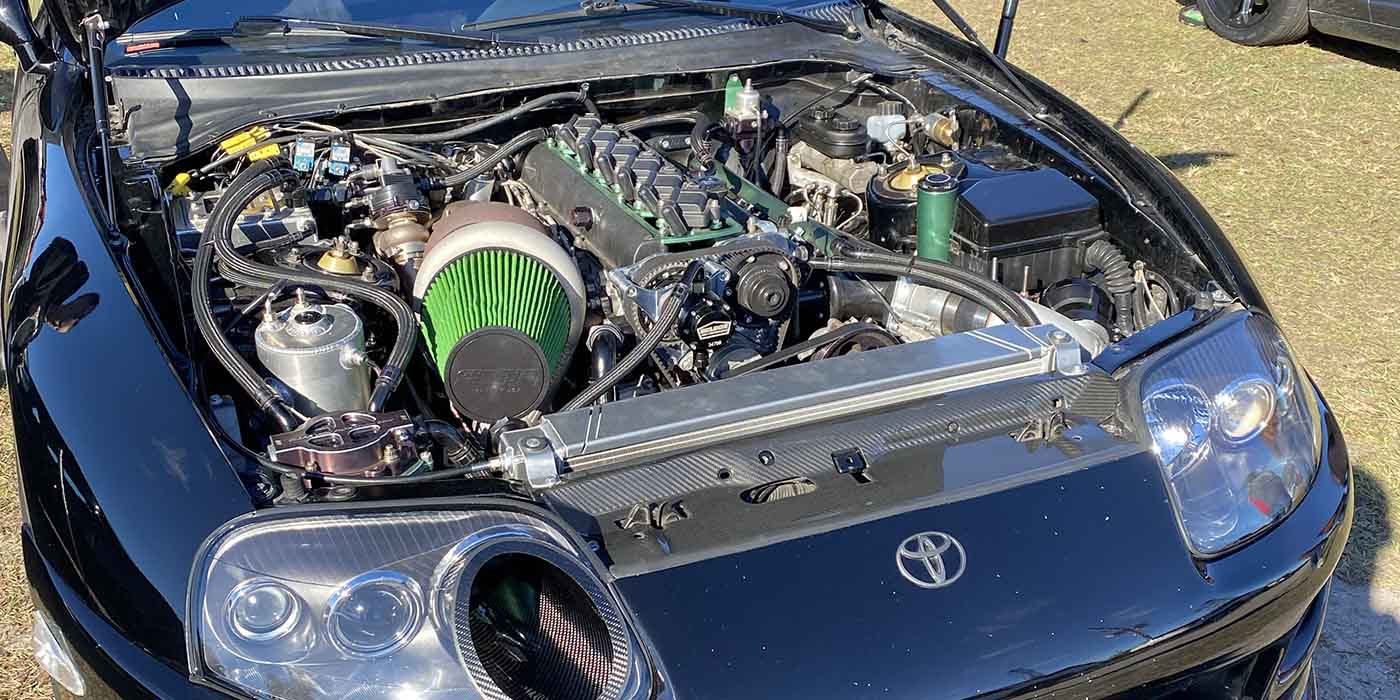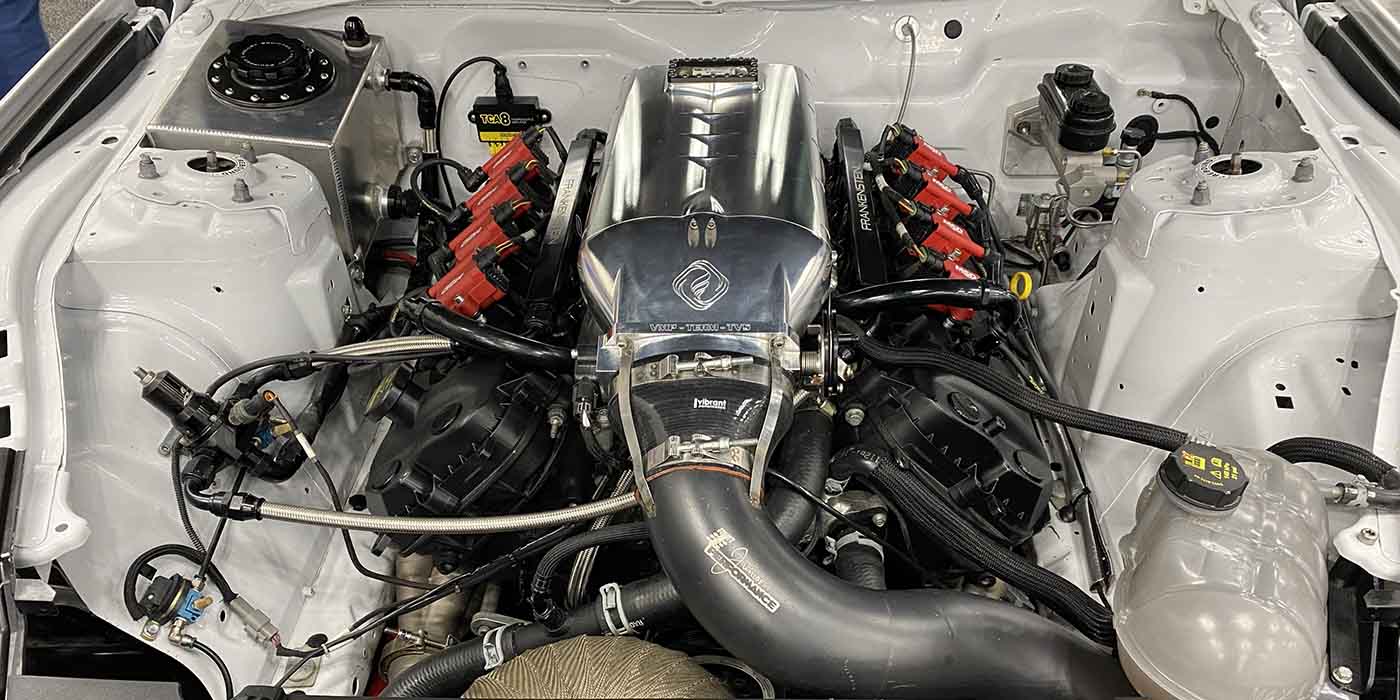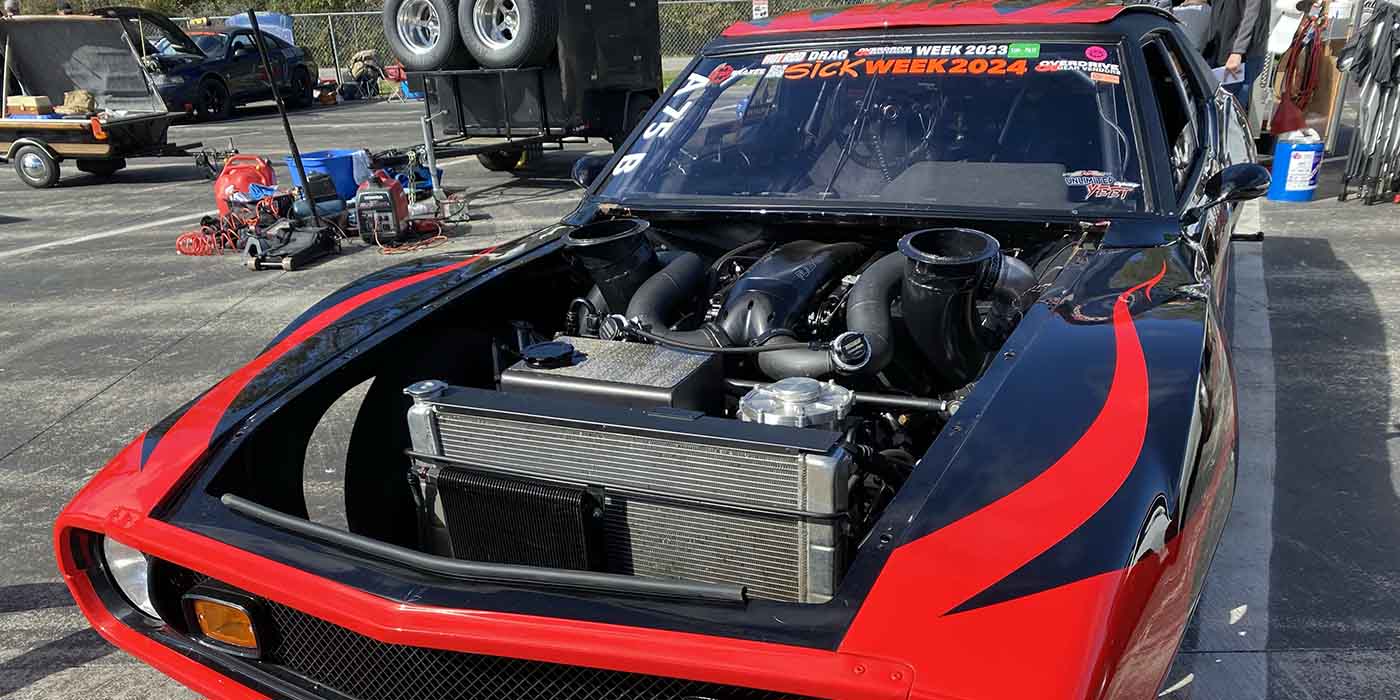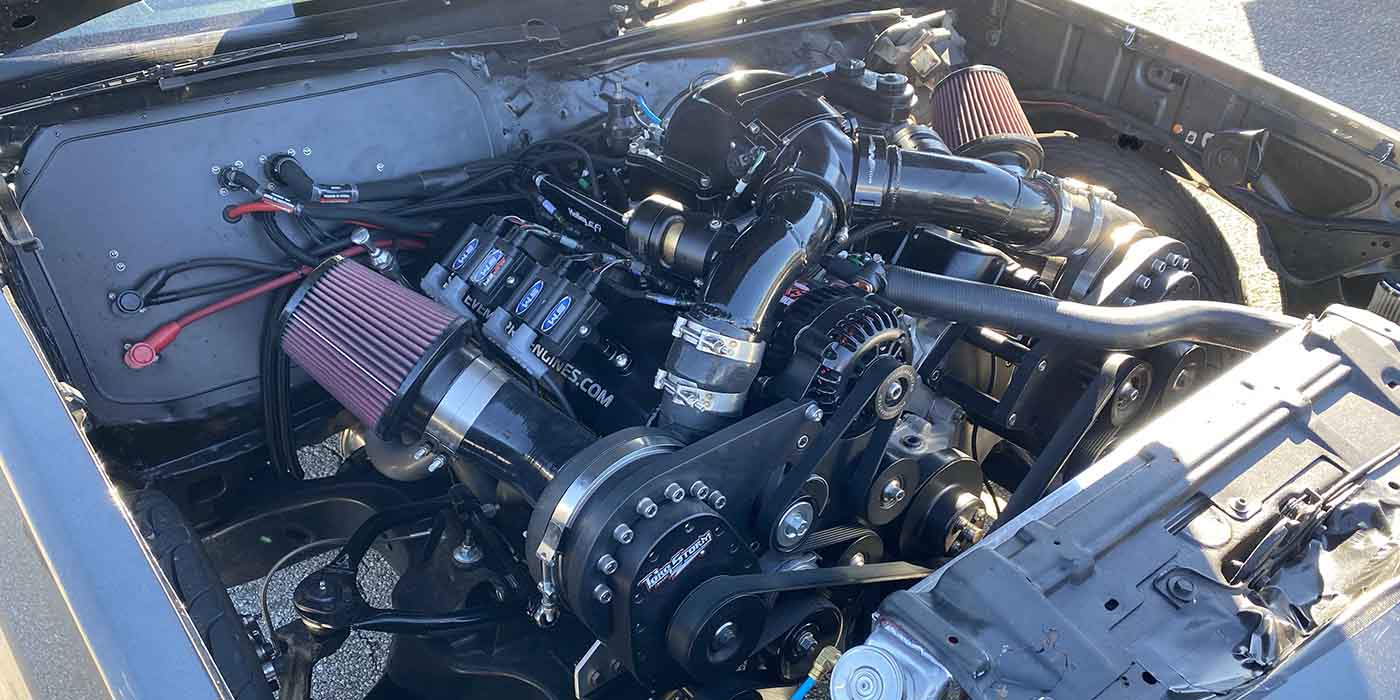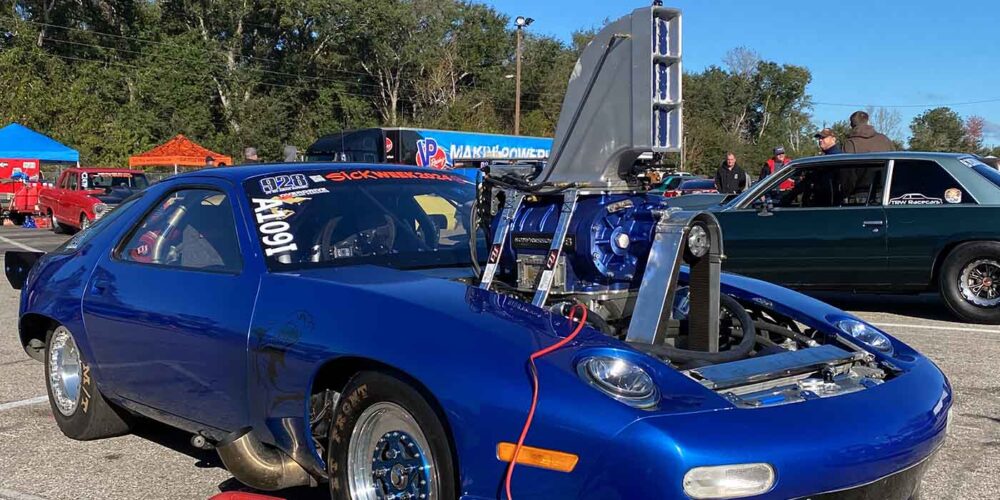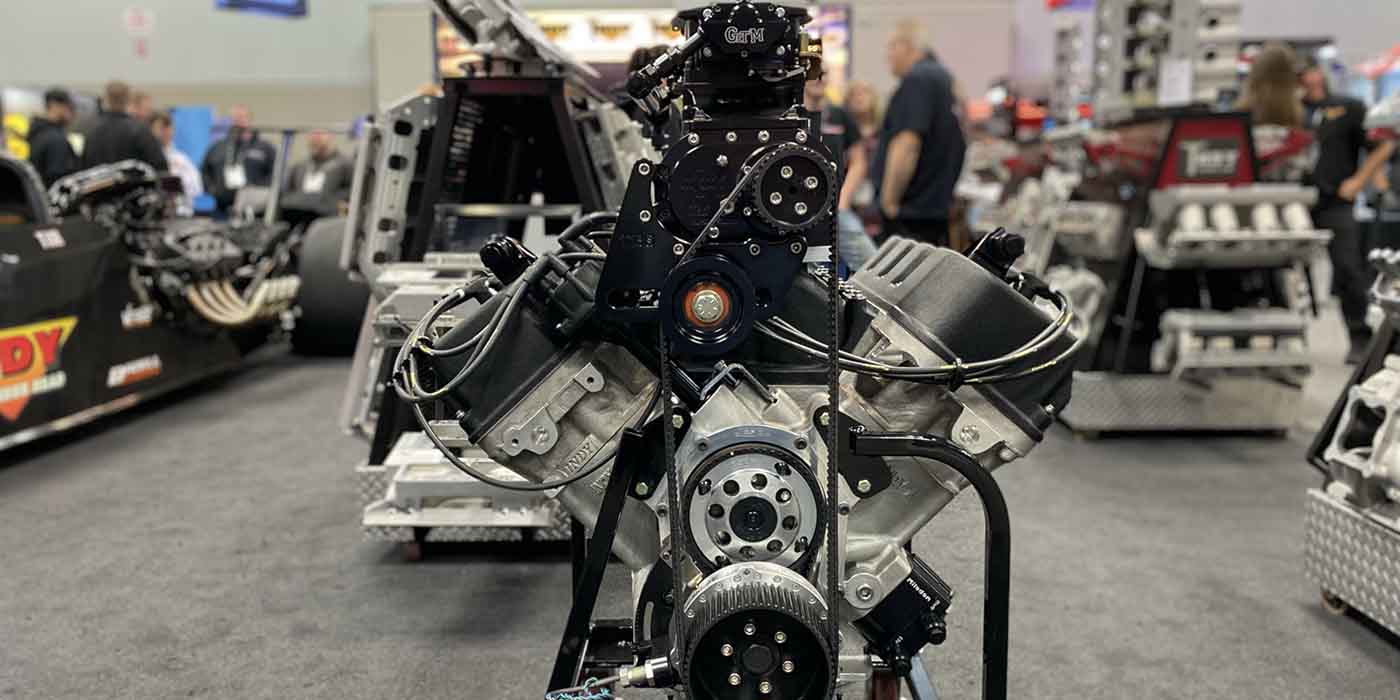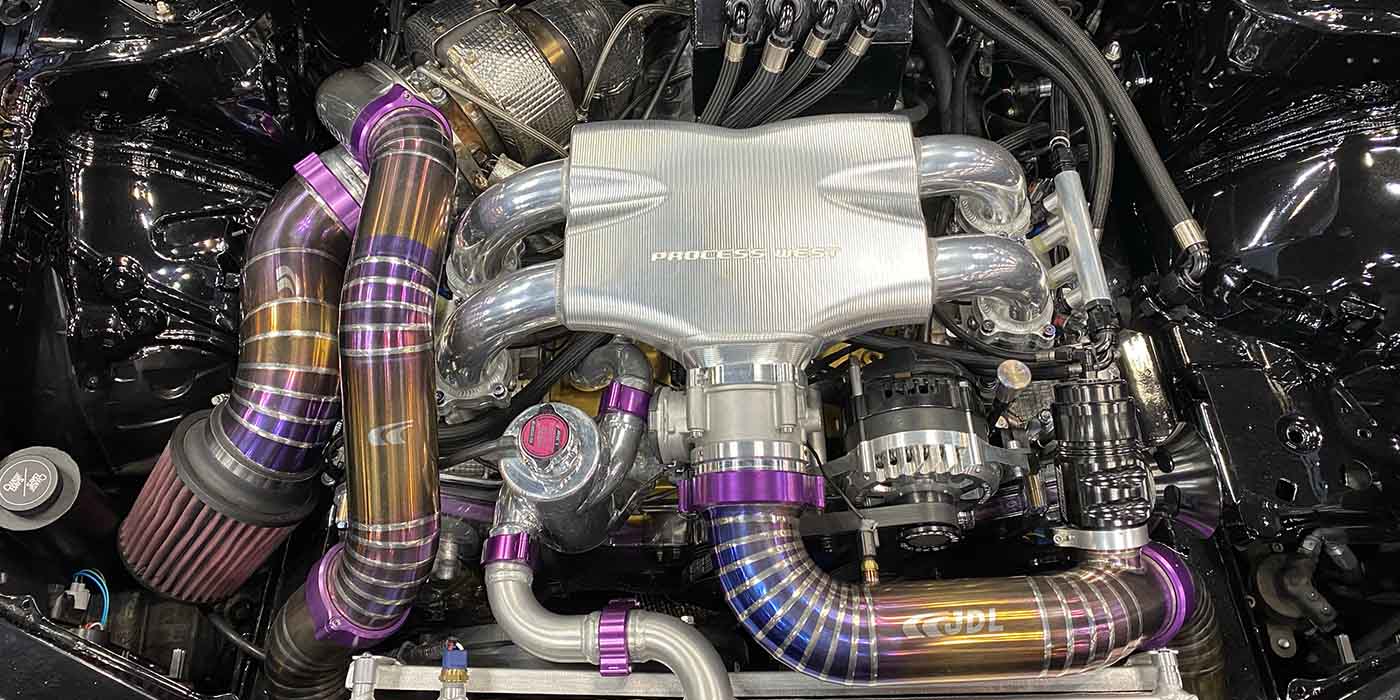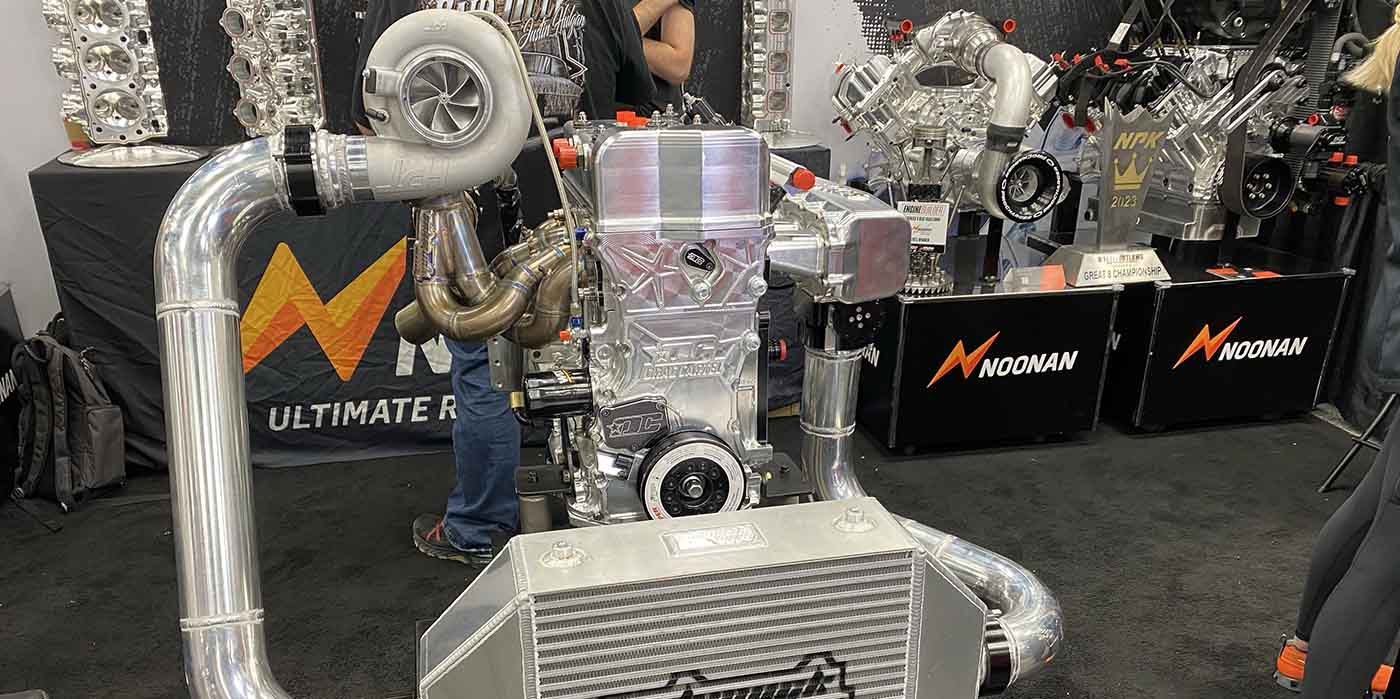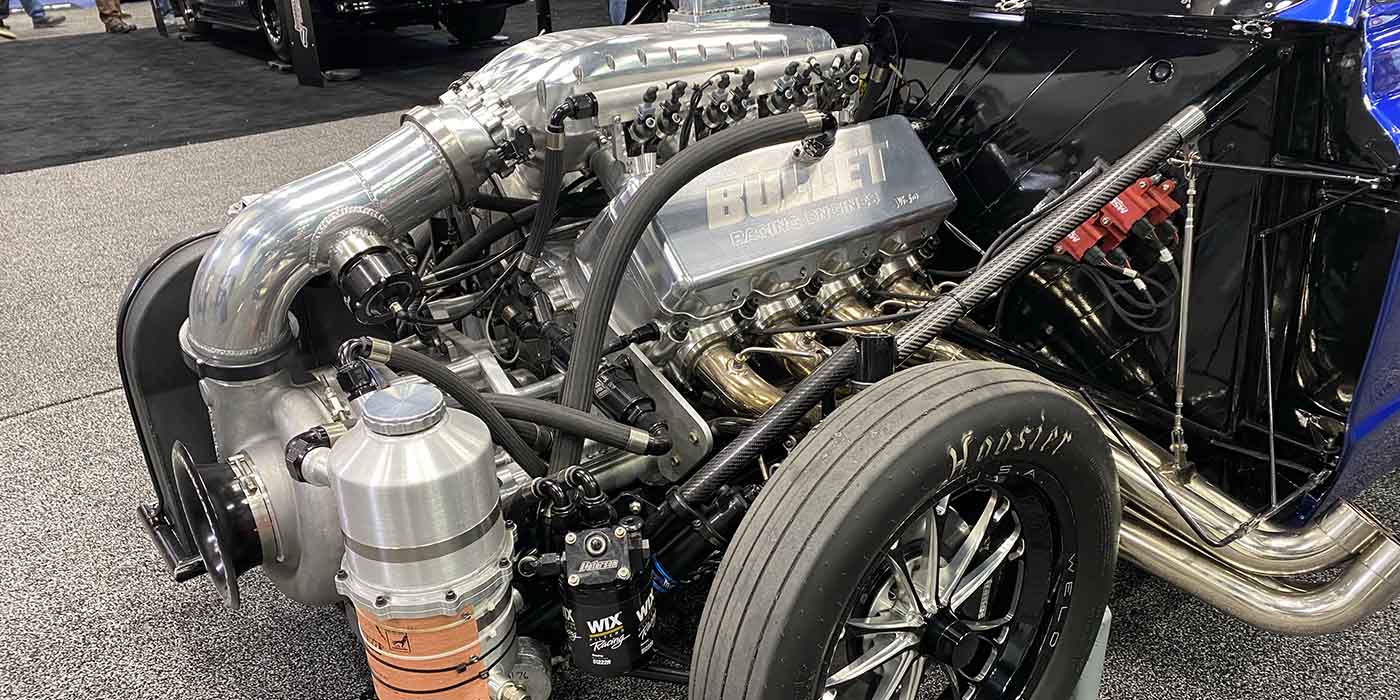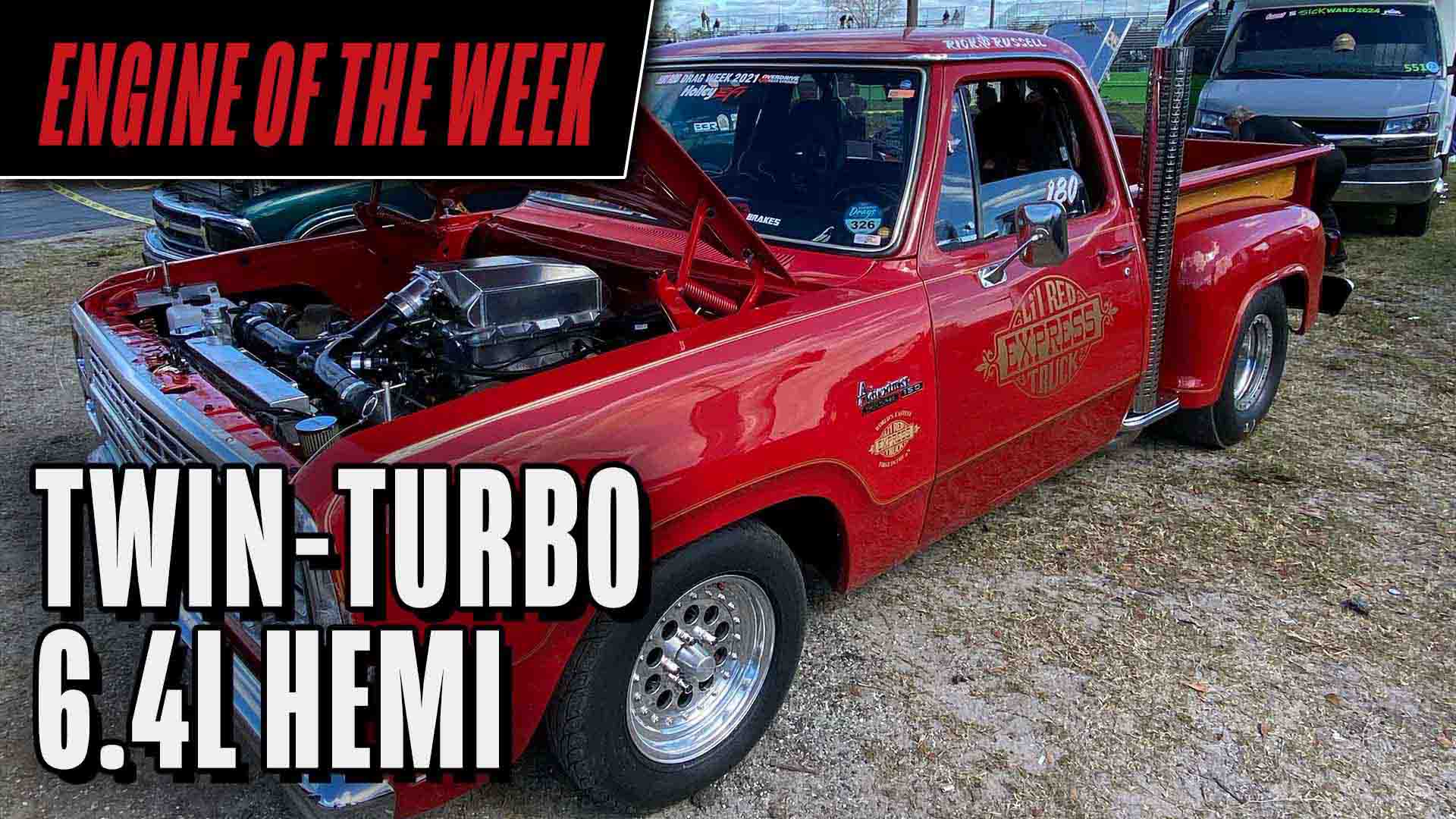Engine of the Week is presented by



Ever since we began covering drag-and-drive and attending events such as Sick Week, we’ve been fascinated by Dave Schroeder’s C7 Corvette and its massive nitrous engine. We had planned to speak with Dave and his partner in drag-and-drive crime, John Ens, during the 2023 Sick Week event last year. However, as fate would have it, Dave’s first run down the track at Orlando Speed World that year resulted in his C7 Corvette coming loose at the big end of the track and a bad accident ensuing, where the car hit the near wall and barrel rolled into the opposite wall before coming to a stop. Thankfully, Dave walked away from the crash (seen below) relatively unscathed, but his C7 was done for.
Not one to want to sit on the sidelines for long, Dave and John were back at Sick Week in 2024, but this time, they brought with them the 1966 Corvette with an 872 cid Reher Morrison-built Pro Mod nitrous engine. We caught up with John to get the details of the engine, and why they’re one of the few teams using nitrous.
As John would explain to us, the engine is a 2013-era Reher Morrison build featuring a 5.300” bore space and 872 cubic inches, and is virtually the same as the way Reher built it back in the day.

“There’s a few upgrades in the valvetrain area, and we play with some bottom end clearances as well because the Pro Mod guys like to run them really cold at the start line and they open up the clearances a little, whereas when we heat soak them on the road, we just can’t tolerate as wide of clearances as what they run in a race application,” John Ens told us. “The biggest secret to making this motor live in a drag-and-drive application is our valvetrain. We run an Isky camshaft with bushing roller lifters and their spring package from PSI. It has been trouble free.
“Early on, when we had others, we couldn’t keep it together for more than 300-400 miles. With the Isky stuff, it’s just been so smooth and so repeatable. We used to have some grinds that had very little repeatability. I don’t know why it happens, but when we got set up with the current Isky grinds, I could make small changes in the tune-up and they showed up.”
According to John, he believes the cam they run in the 872 cid engine is one of the largest run on the street – it’s just short of 1.200” lift.
“We do change the rockers down from a 1.9/1.85 down to a 1.6/1.55 rocker, so we drop the lift for the road, but we’re still in the high .800”. It’s about 1.200” on track,” Ens says.

John also pointed out that the engine features a fairly unique intake manifold and utilizes dual drive-by-wire throttle bodies, which he says have been a challenge because they’re highly sensitive to harmonics.
“This intake is shaped a little bit like a bell,” he says. “We’ve had to isolate these. We put the velocity stack on the front, which has helped dampen them and works well. It doesn’t bounce the contact so that it goes into a limp mode. But, early on, we did have troubles with that. This is a David Visner intake out of Michigan from Visner Engineering Development. He’s also done the oiler valve covers for us. That was another big part that helped our valvetrain was oiling the springs.”
The Reher Morrison engine runs a Dailey modular dry sump oiling system that is mounted to the pan, which John says is super nice, especially over the road, because it’s rigid and they don’t have any belt issues with bracket flex and things like that.

“The Dailey oil pan is another big part of the success of this motor over the road,” Ens points out. “We drive it in such a manner that we get lots of pressure when the motor heat soaks. It’s things that don’t show up in drag motors that often. It really shows up for us on our long drives.”
As mentioned, one of the things that set Dave and John apart from most in drag-and-drive is the use of nitrous versus the much more popular option of turbocharging, and to a lesser degree, supercharging. John says the engine features four stages of nitrous.
“The four stages of nitrous are just a soft line kit because I’m not a Monty Smith or others in nitrous plumbing and it’s light and flows enough, so we’ve been happy with that,” he says. “We like to be a little different. We like to go to the beat of our own drum. Sometimes, we’re only beating our heads, not the drum at all, but we think it’s cool. A lot of this racing is about loving the car you’re working on and feeling it’s a cool hot rod, and we both think this is a cool hot rod. Why not be different? It gives people something else to maybe cheer for instead of just turbos.” Something else about the car and the engine combination is the cooling system is extremely important. According to John, the cooling really came easy after they got involved with Delta PAG.

“This is a mono-core radiator,” he says. “It is moved away from the traditional multi-core. In the old days, everyone wanted a four core in their hot rod. No, this is a single core 1.5” tube double-pass radiator with dual 16s mounted on it, Delta PAG fans, low amp draw, and super high airflow. This motor runs very, very cool over the road. That is the first line of defense, and then a little bit of our tune-up. It’s a 13:1 compression motor. It’s still factory compression. It’s a 5.000” bore and 5.550” stroke, and we run it on pump gas over the road and we’ve built a little timing ramp, so it looks like it’s got a vacuum advance of sorts.
“It’s got a little tower of timing in our cruise range where we’re low throttle, low load, even low engine speed. We can crank the timing to this thing and it really helps. We can pull the fuel and we can really crank the timing and then we watch our water temperatures go down. We watch our fuel flow go down. With a camshaft as large as this one, reversion is a real deal. Things like washing guides of oil, if you run rich, a lot of people think, ‘Oh, it doesn’t hurt to run rich.’ Well, it does if it’s washing your guides dry. We learned early on, maybe we had to take some steps to either seal the guide on the bottom. We’ve actually got a carbon step machined into the bottom of the guide. Our thoughts are that, I think that’s an old school trick where that was supposed to, if you did carbon up, it was supposed to kind of carbon up right in that step and then act somewhat like a seal down there. We have done that on these heads.”
John told us that he and Dave utilize an old-school machinist and engine builder named Ken Murray from Ken’s Custom Auto Machine in Winnipeg, Manitoba, Canada, who helps them with the many intricacies of the Reher Morrison nitrous engine.

“He handles all the precise measurements and builds us our fancy brackets, and built things like the velocity stack,” Ens says. “He takes care of us in that range, just being a master machinist and has a lifetime of knowledge, which has helped us a lot.”
All of Dave and John’s hardwork, plus the help from others around them has helped them become one of the top teams to watch in the drag-and-drive scene. The 872 cid Pro Mod nitrous engine they had with them at Sick Week 2024 is capable of some serious performance.
“This motor is supposed to be capable of around 2,700 horsepower,” Ens says. “The honest truth is we’ve never run more than about 2,200 horsepower. We struggle with power application. We test, but we don’t get enough testing in. We need to test more. Just before Sick Week, we had made a converter change and I think it’s going to be for the better, but my knowledge level is on the power application is probably not where it needs to be to get the most out of that converter, so I’m looking forward to more testing shortly.”

If you’re curious how the 1966 Corvette stands up to Dave’s prior C7 Corvette, well, they are two entirely different cars, as you can imagine.
This car (1966 Corvette) was never built as a low-6-second car,” Ens admits. “It was virtually like a single frame rail deal that we made into a double frame rail years later, back in 2015. There’s a big difference in that (Jerry) Bickel car just in the strength of things. It’s amazing when you look at the mounting points on a car like that and how robust they are, they’re massive. That other car responded well early in the 60-foot and I’m starting to look at our plenum volume as being possibly part of the issue.
“This car (1966) has got a massive plenum and the other car is probably about one third smaller and it seems to hit harder. A lot of the nitrous guys are running that common rail in the middle of the intake and it’s shooting right down the runners. I believe that’s for a harder hit. I think we have to do a little bit more research into getting the car to hit a little harder on the line. That’s where we’ve struggled. Whether that’s a strategy of fixing up the intake volume or fixing up my nitrous delivery – maybe it’s just in my timing curve and I’m still screwed, but I’ve got lots of ideas.”

While the 1966 Corvette isn’t what the C7 was, the engine in the car is still a serious powerhouse, which means Dave should still be seeing 6-second passes fairly regularly.
“I think this car should go 6.50s all week,” Ens told us. “If we can go A to B, it should go right in the mid-6s without too much trouble. We’re not running all four stages of nitrous. We’re going to run three stages and then see what’s going on at the end of the week – if we’re even here and see how the road goes.
“A car like this is trying to kill itself every minute it’s running. There’s so many little spots that could be failure points and weird things show up. It’s still a big deal to make the drives. It really is.”
Unfortunately for Dave and John, their Sick Week ended not long after we spoke to them on day one in Orlando. They completed an 8.15@165 mph pass, but had to bow out of competition before day two. While it’s far from the week they were hoping for, this duo will be back at numerous events throughout 2024 – aiming to best the heavy hitters of drag-and-drive. They even have a new C7 Corvette ready for testing!
Engine of the Week is sponsored by PennGrade1, Elring – Das Original and NPW Companies. If you have an engine you’d like to highlight in this series, please email Engine Builder Editor Greg Jones at [email protected].


